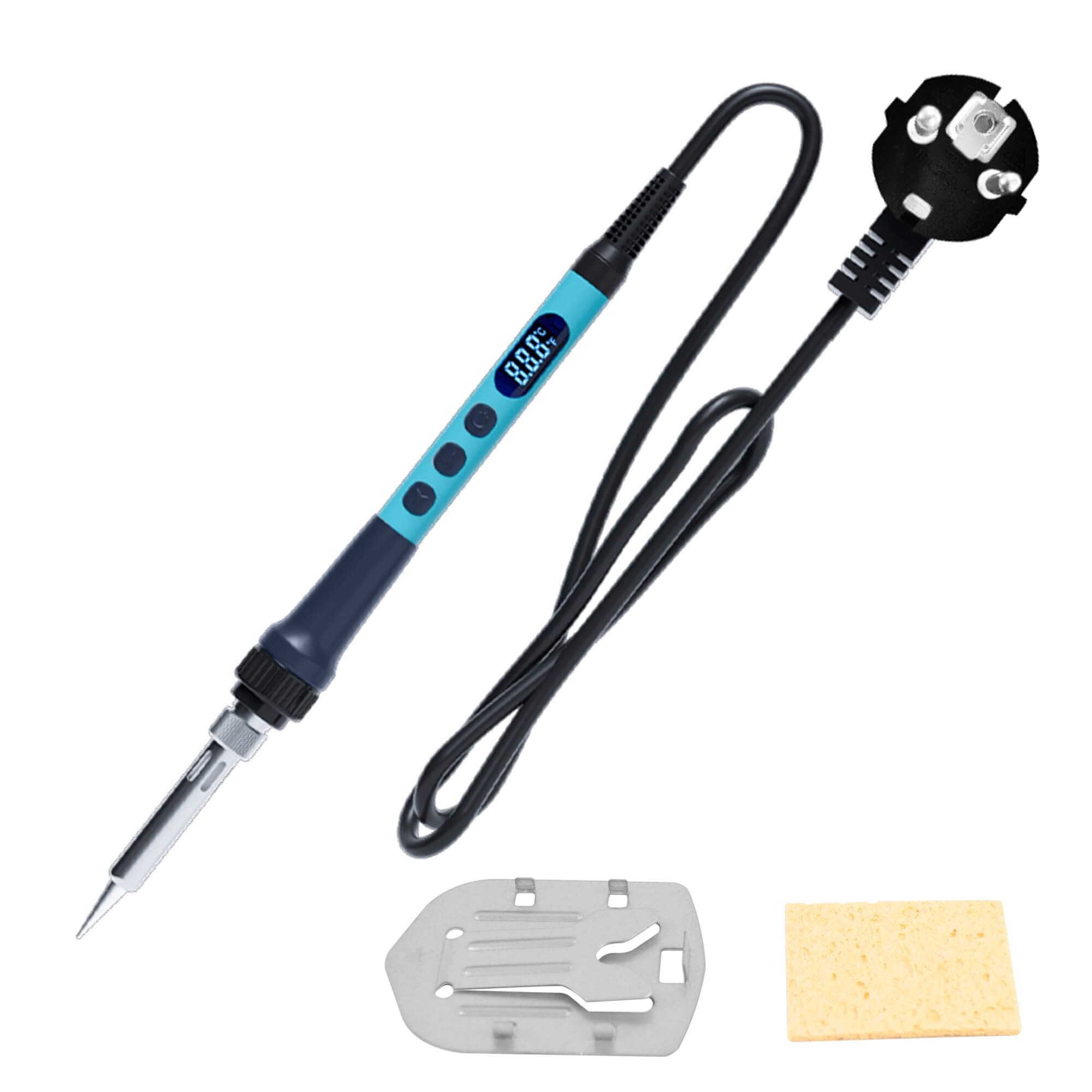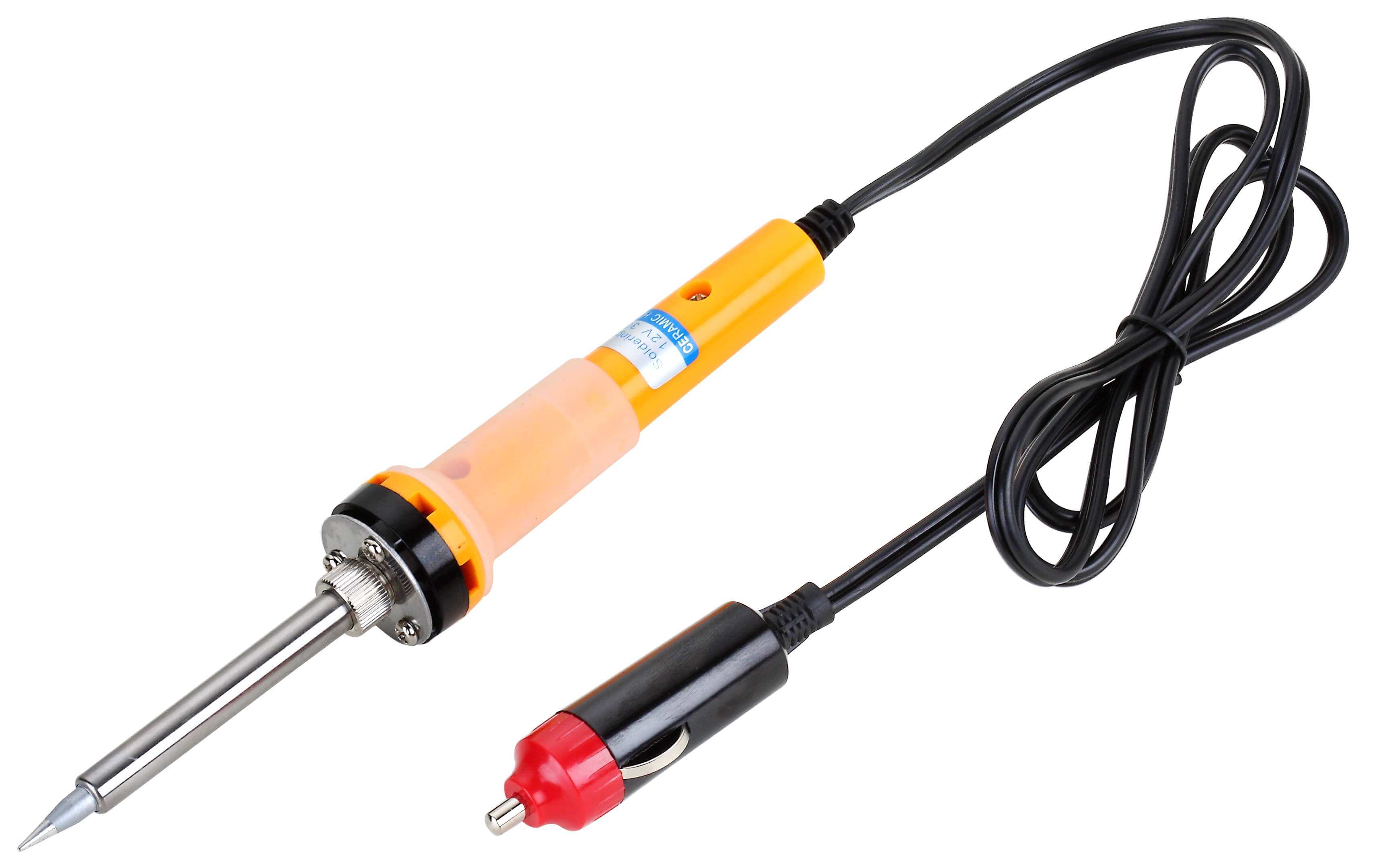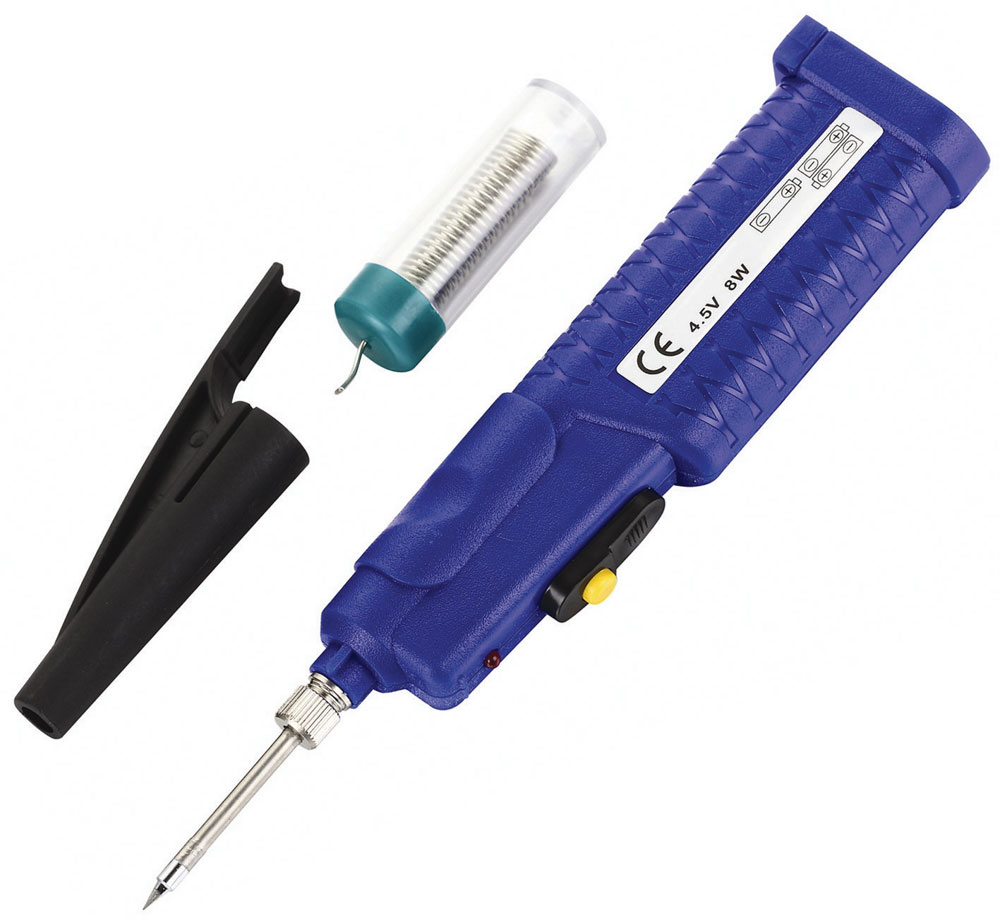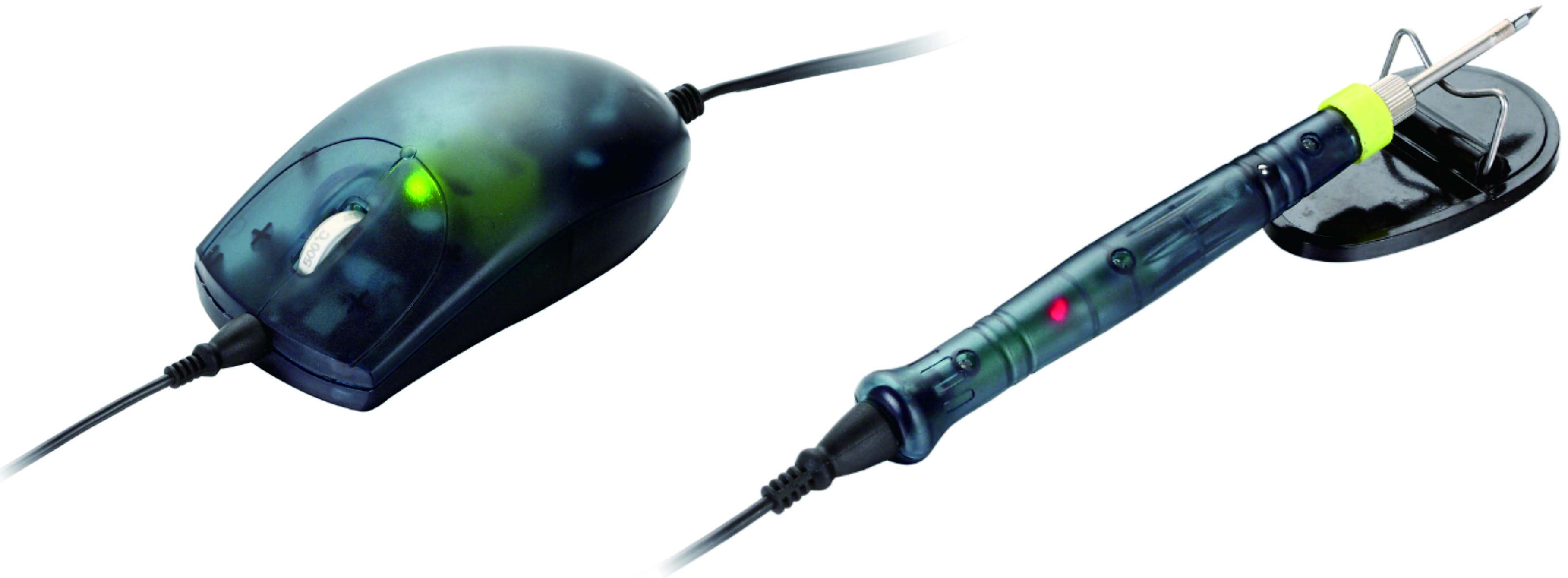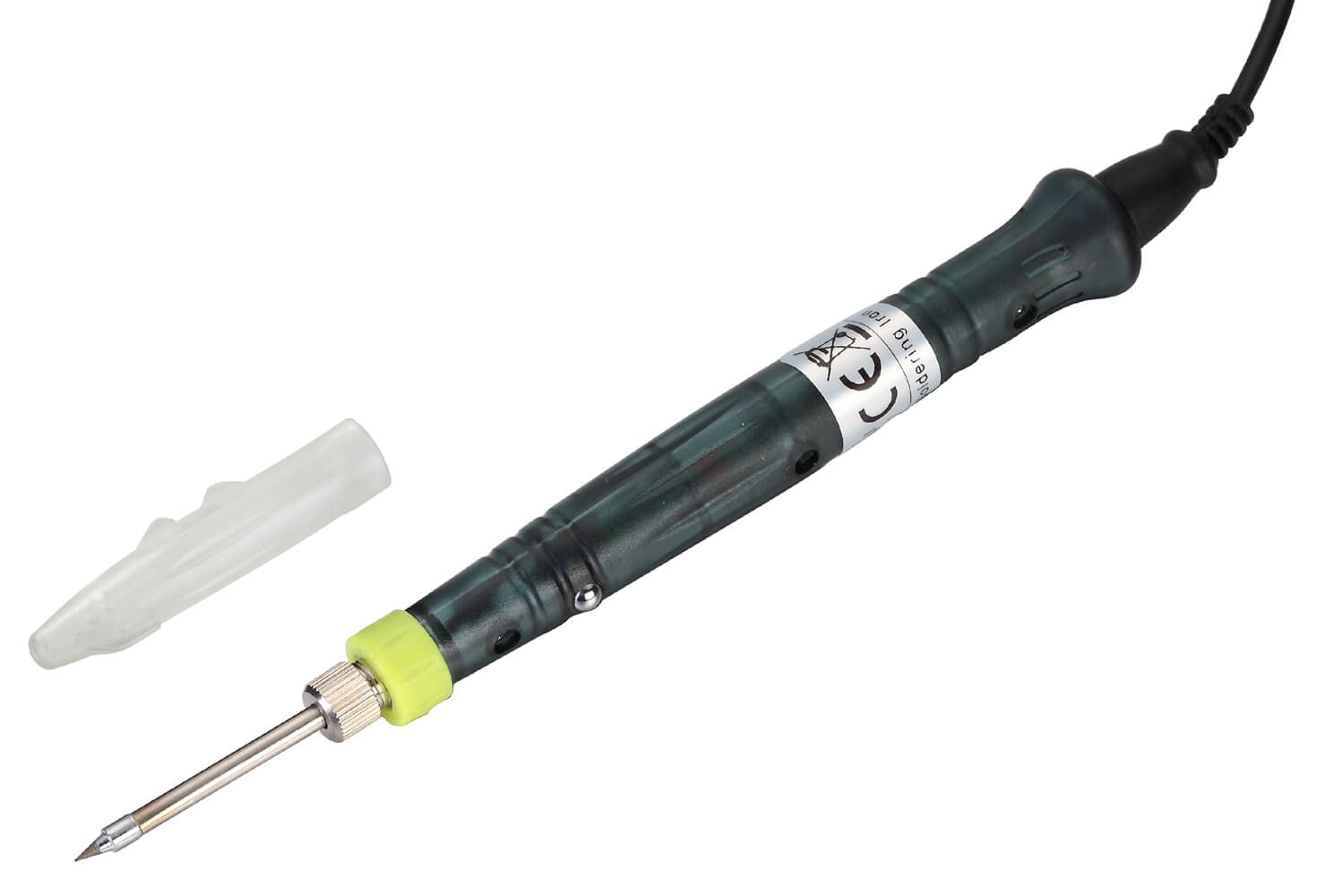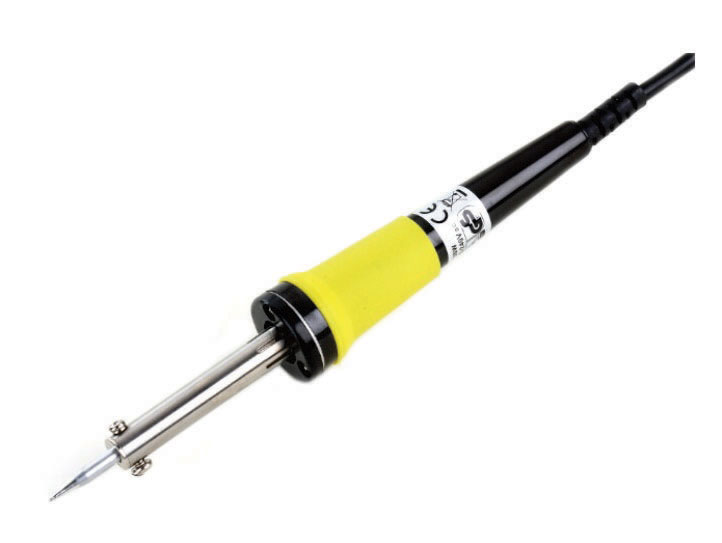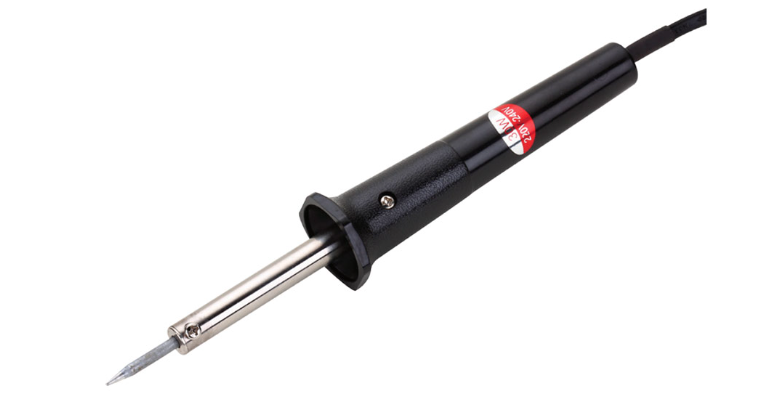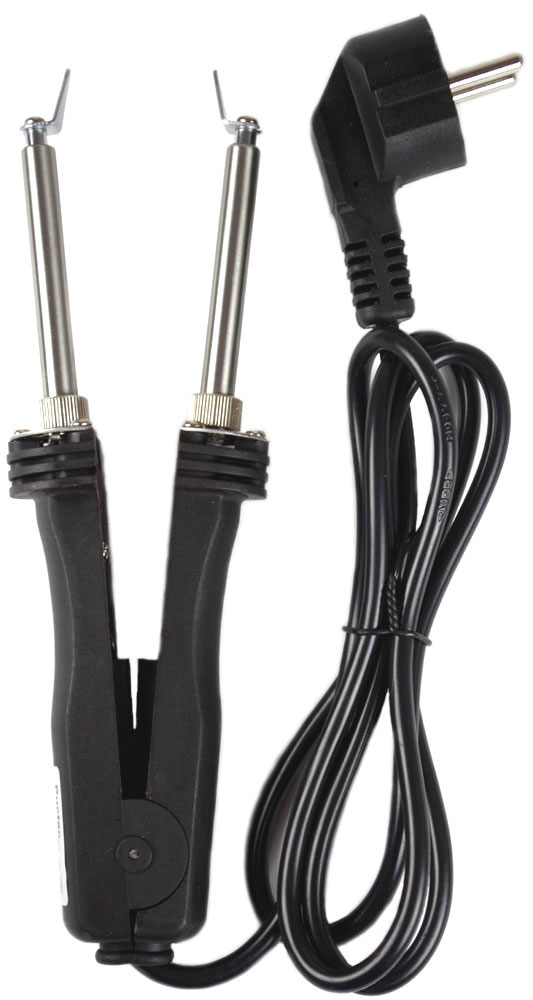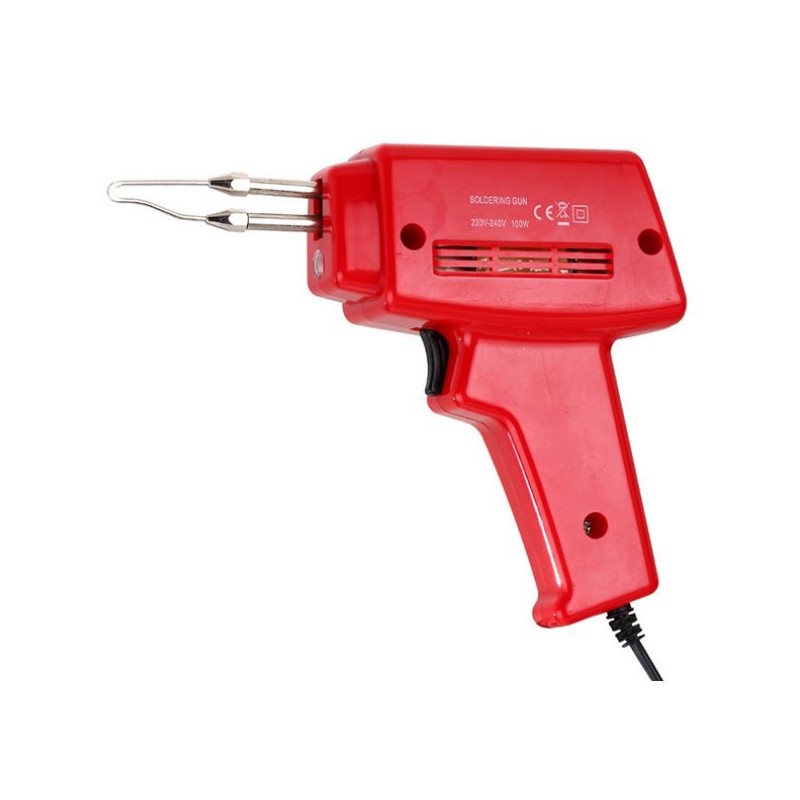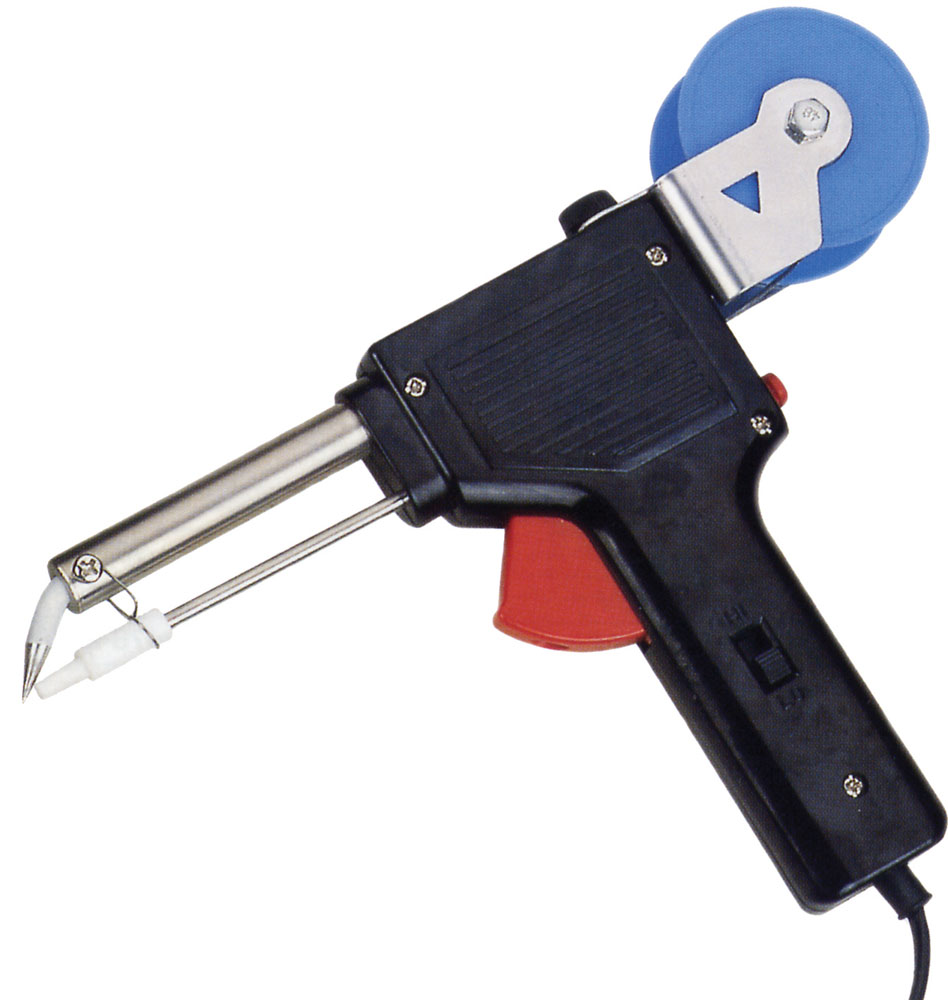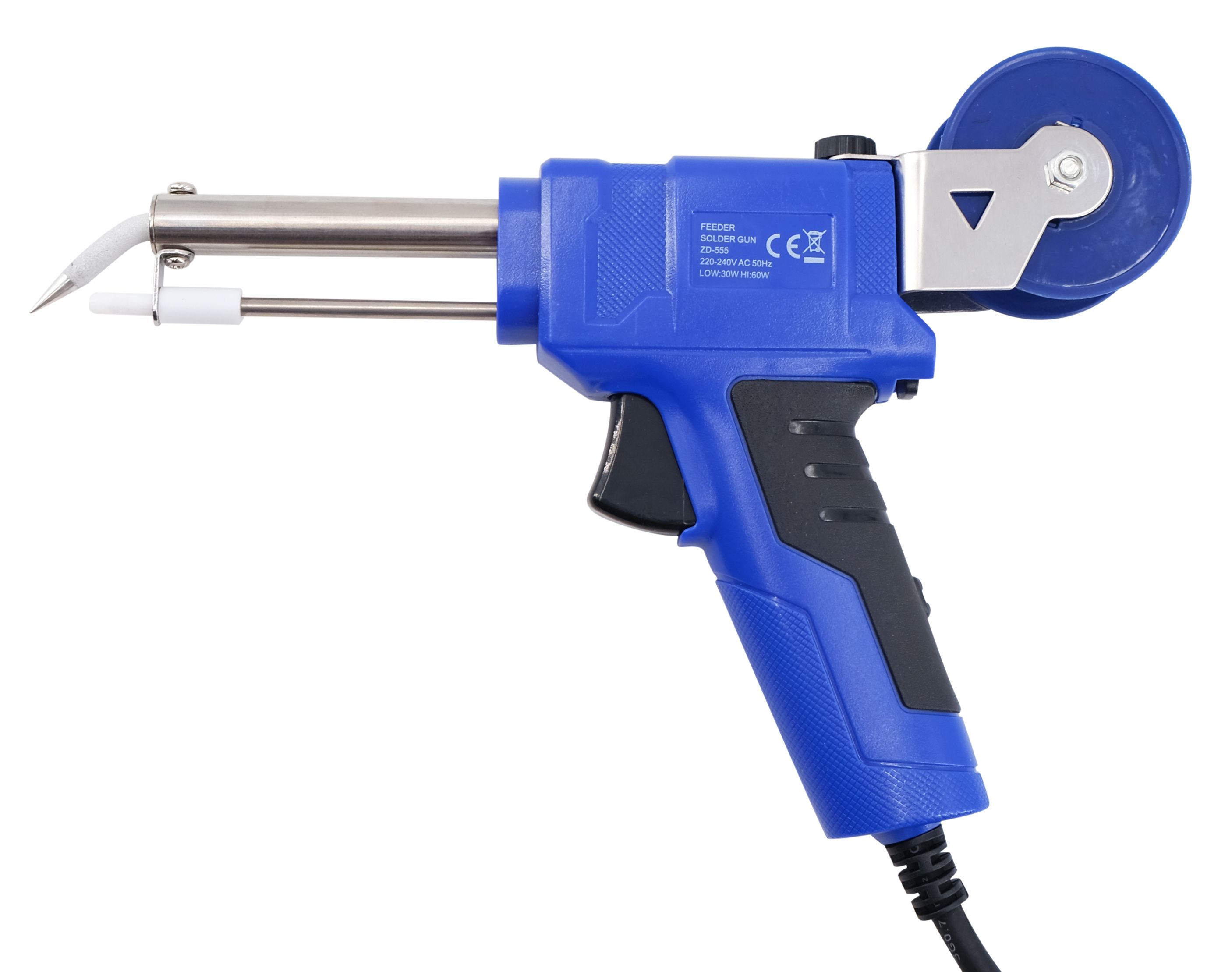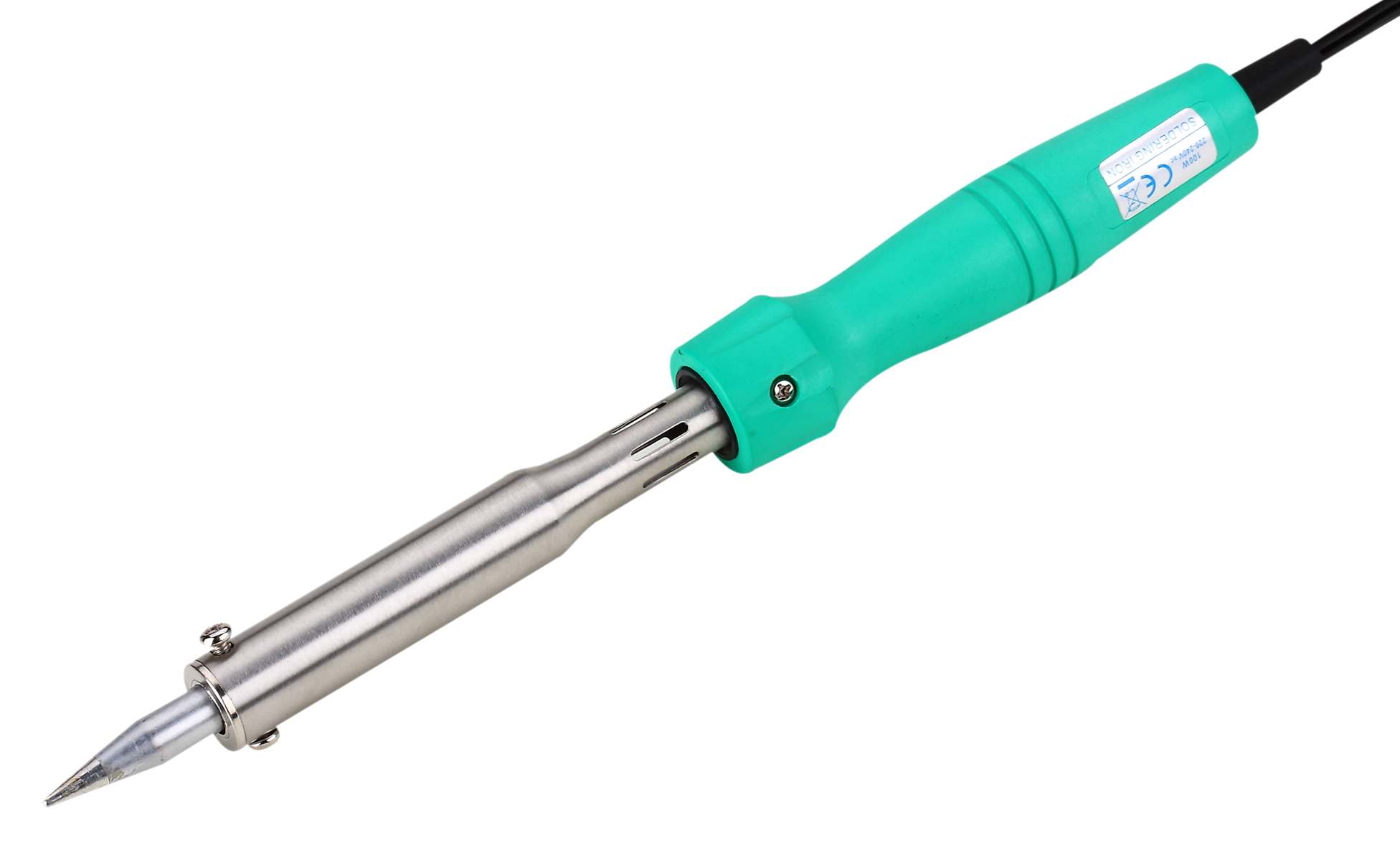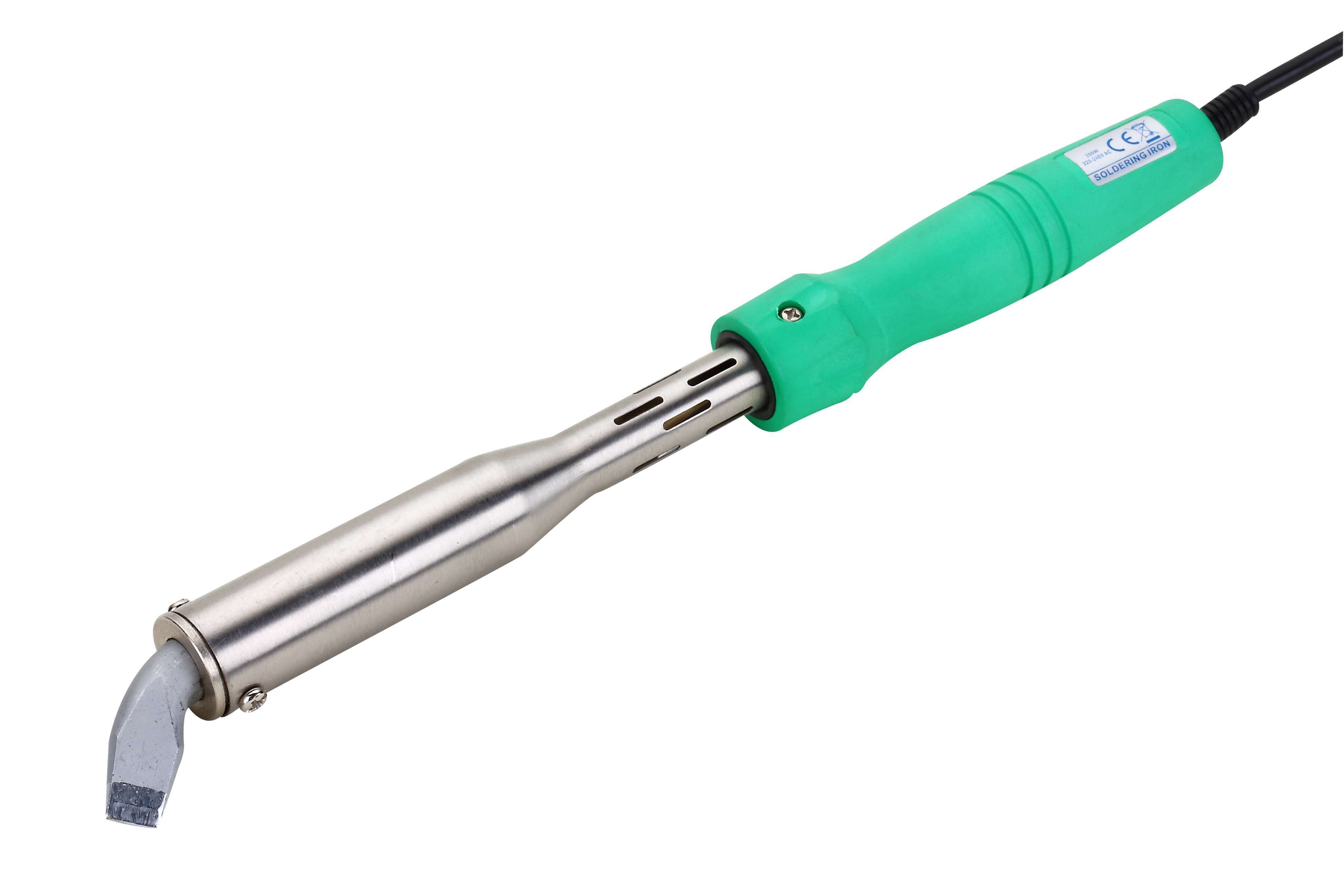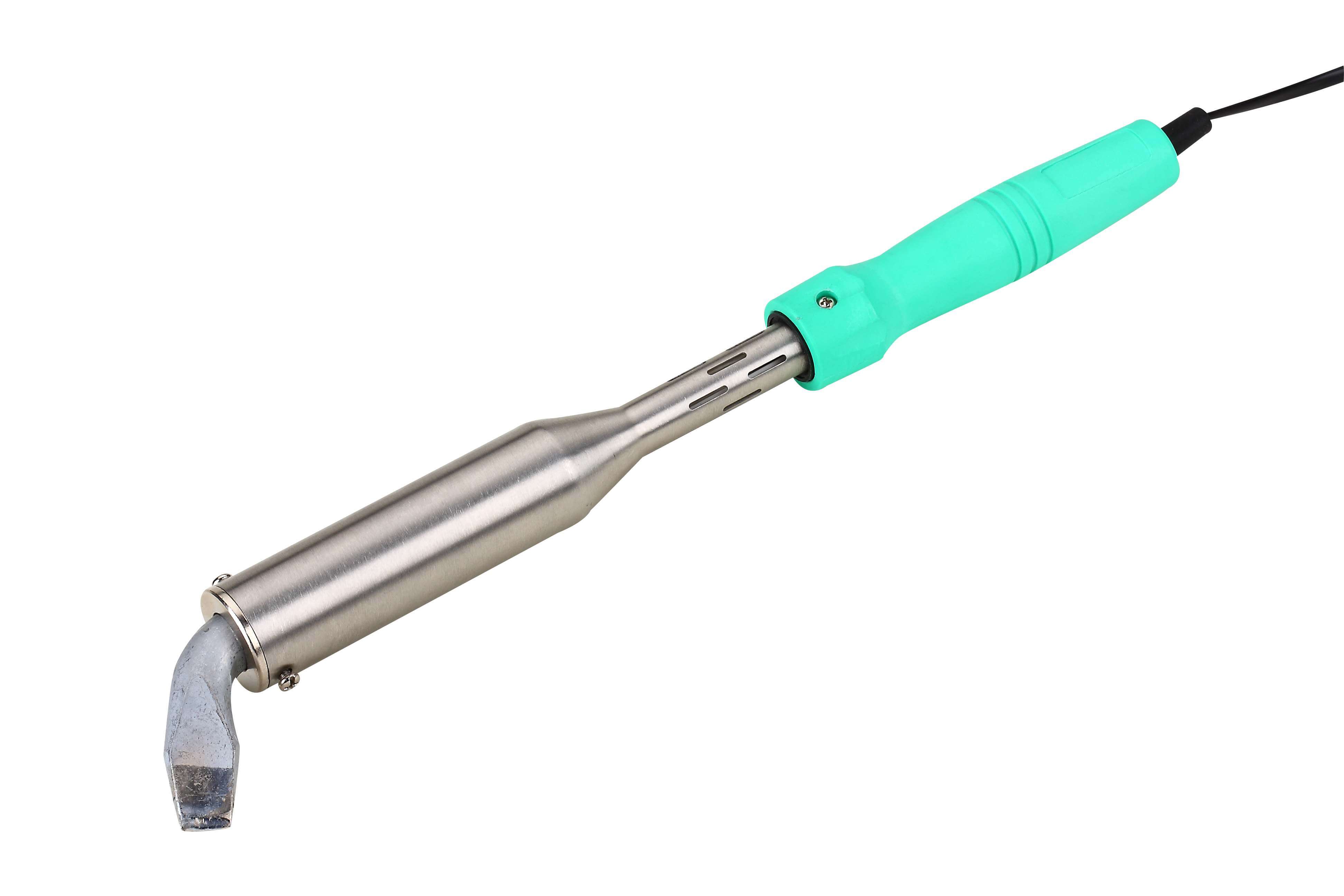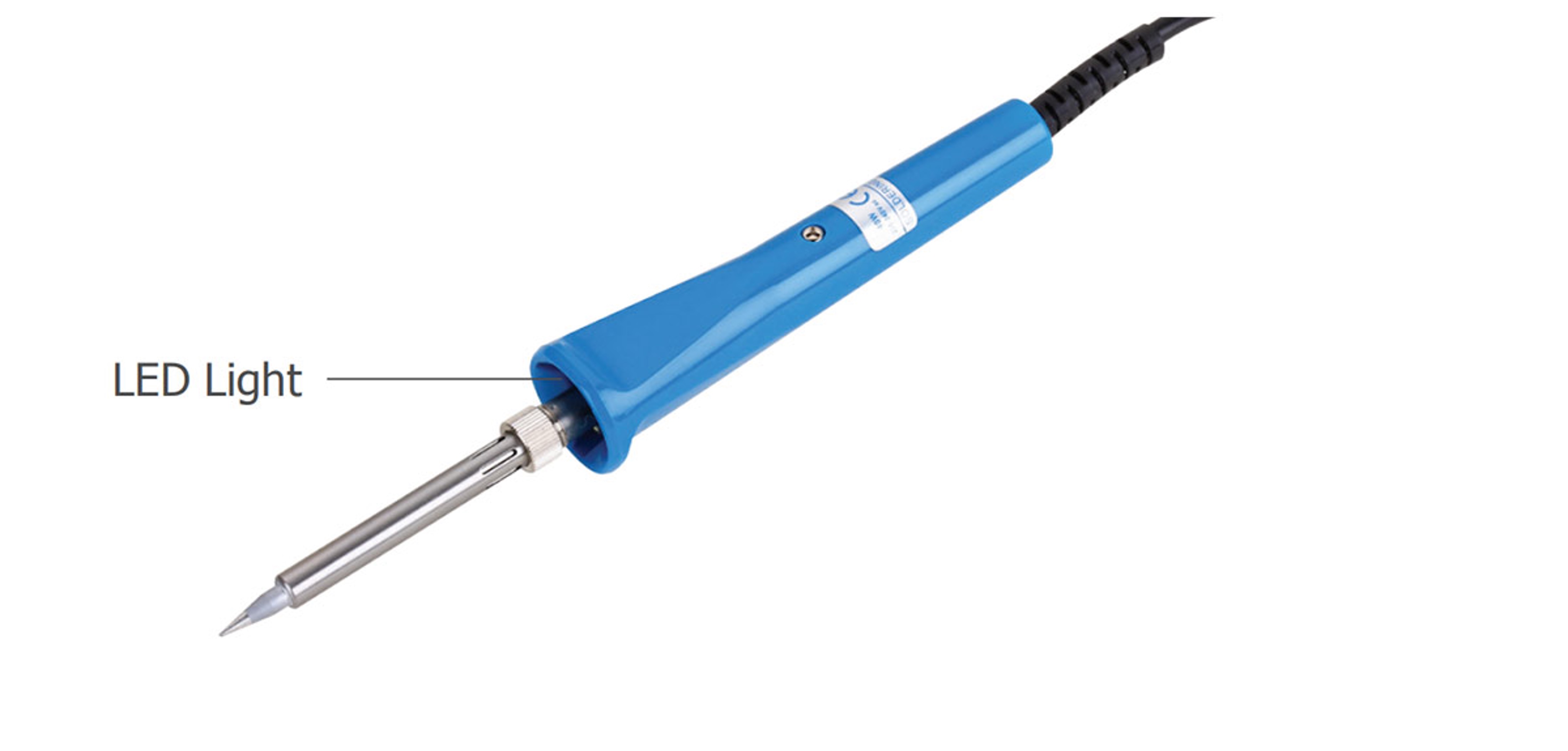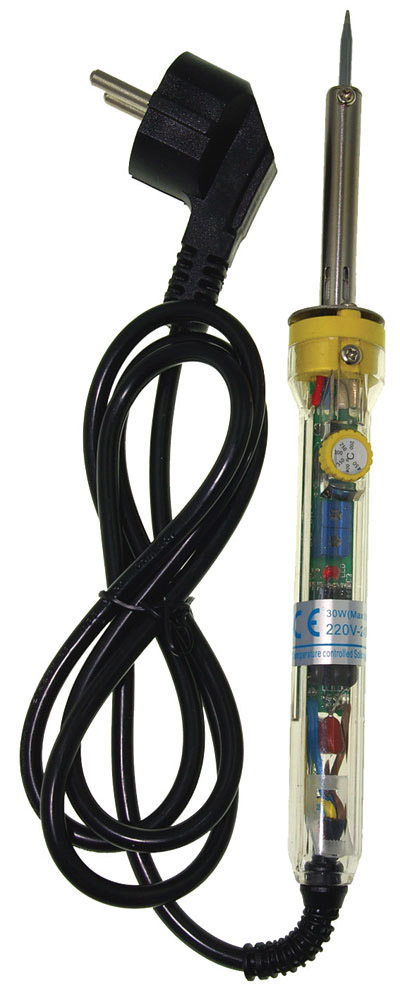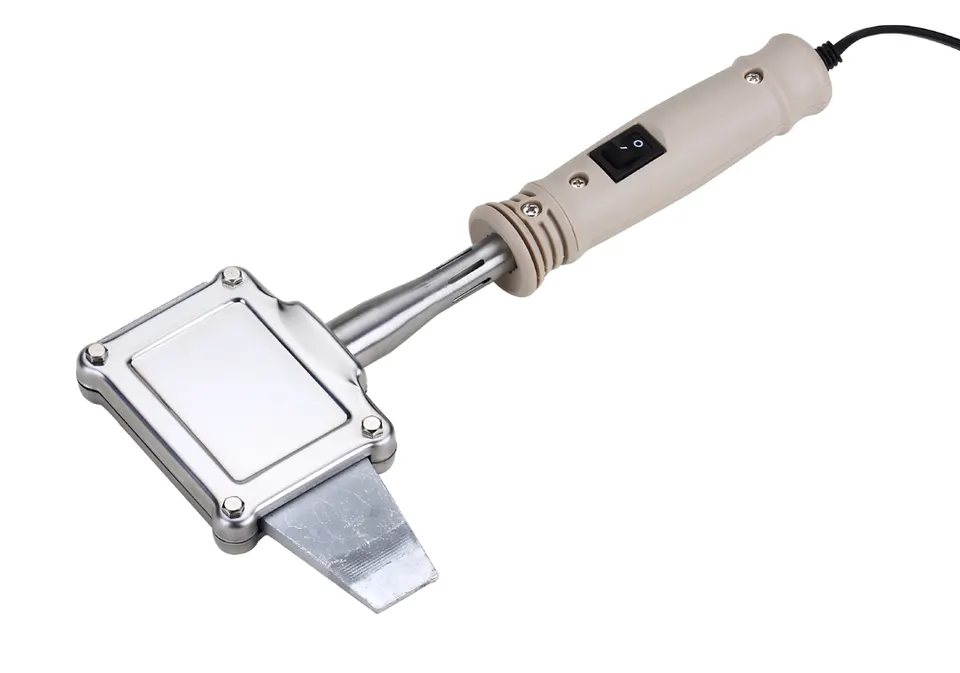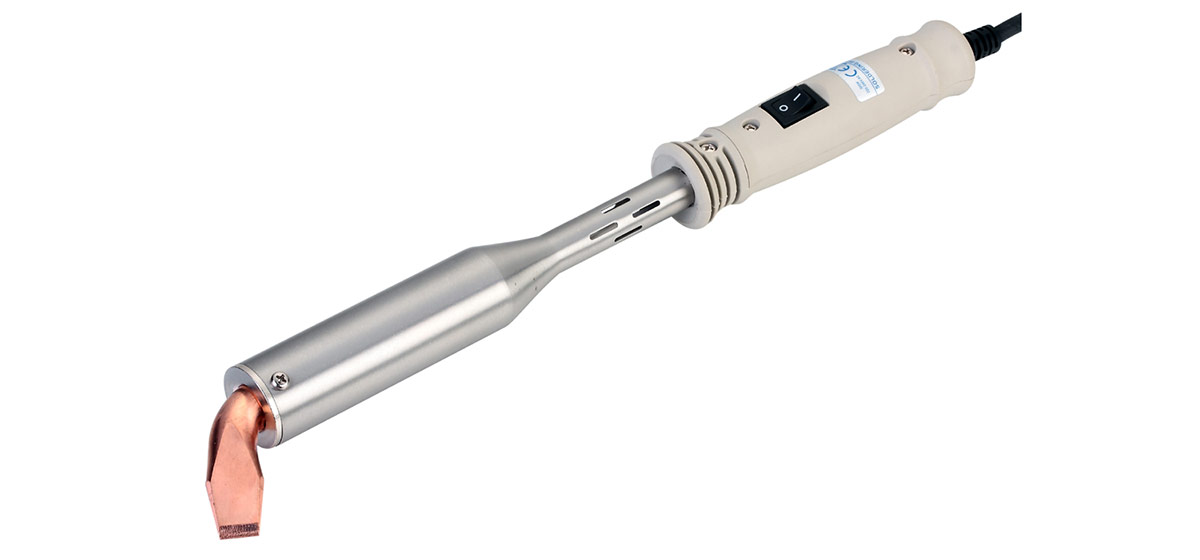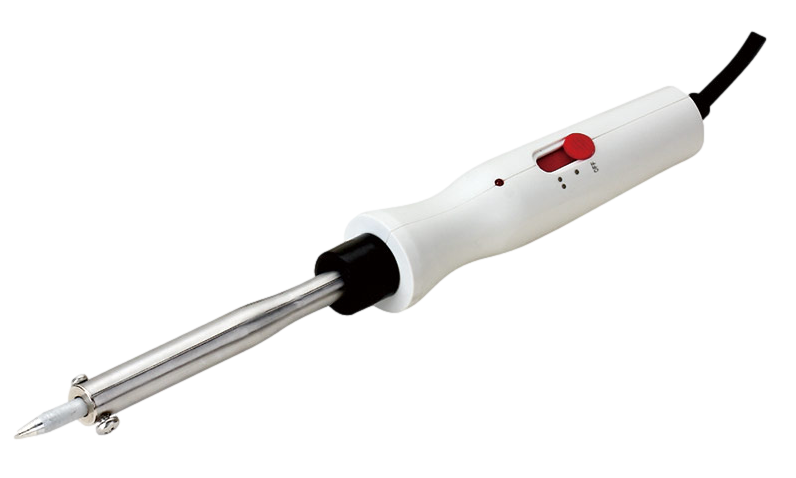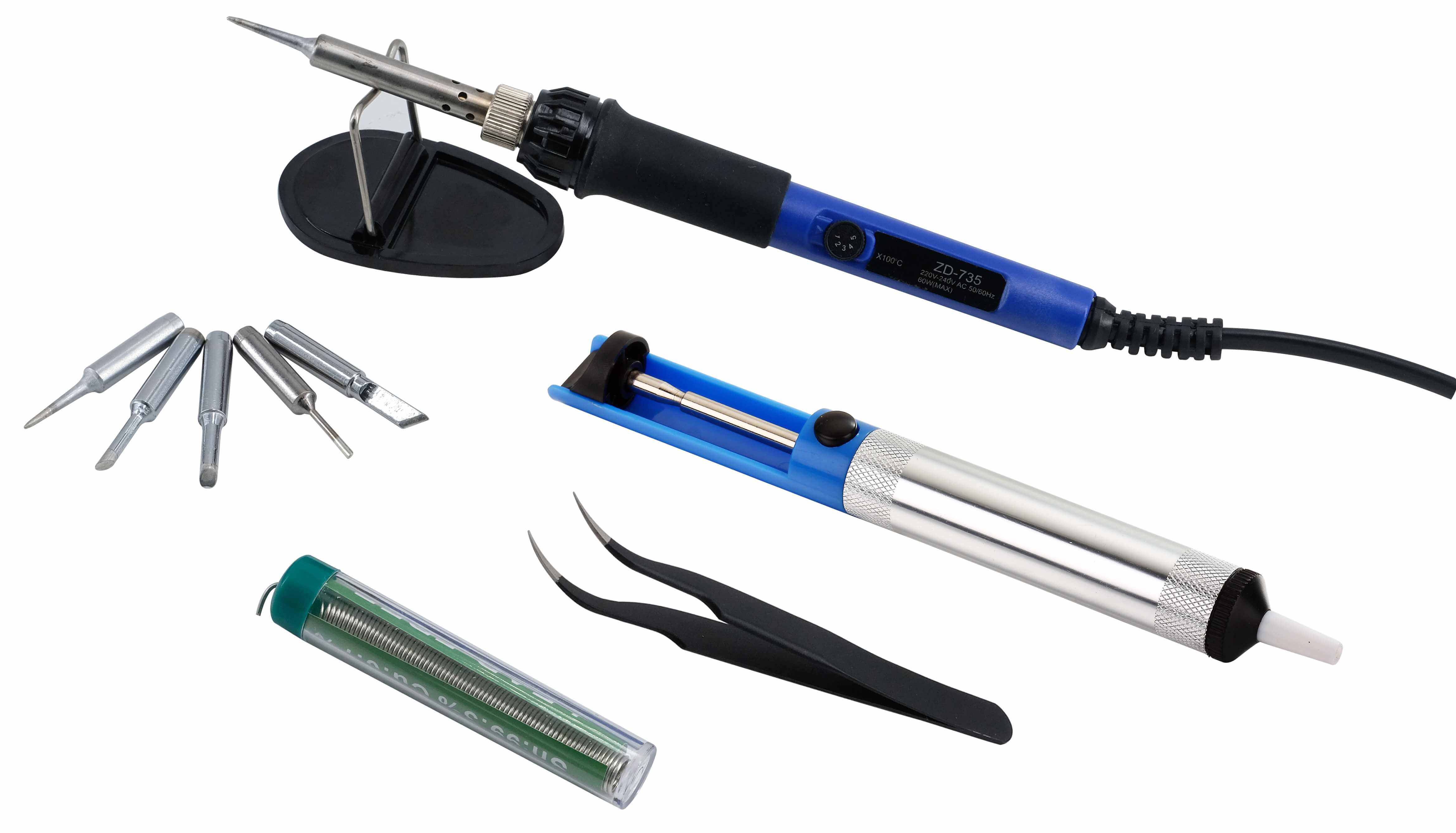Soldering Irons
- Product num. : 601081
- EAN: 4260766895593
- Manufacturer number: PCW09B
-
Show more
- Product num. : 600836
- EAN: 4260766890697
- Manufacturer: Zhongdi
- Manufacturer number: ZD-200NDQ
-
Show more
-
From 1€8.00*
-
From 10€7.40*
-
From 25€7.00*
-
From 50€6.40*
-
From 100€5.60*
Available, delivery time: 1-3 days
- Product num. : 600848
- EAN: 4260766890819
- Manufacturer: Zhongdi
- Manufacturer number: ZD-20D
-
Show more
-
From 1€8.00*
-
From 5€7.60*
-
From 10€7.36*
-
From 25€7.00*
-
From 50€6.40*
Currently not available (delivery time on request)
- Product num. : 600849
- EAN: 4260766890826
- Manufacturer: Zhongdi
- Manufacturer number: ZD-20F
-
Show more
-
From 1€14.00*
-
From 5€13.30*
-
From 10€12.88*
-
From 25€12.25*
Currently not available (delivery time on request)
- Product num. : 600850
- EAN: 4260766890833
- Manufacturer: Zhongdi
- Manufacturer number: ZD-20U
-
Show more
-
From 1€6.50*
-
From 5€6.18*
-
From 10€5.98*
-
From 25€5.69*
-
From 50€5.20*
Currently not available (delivery time on request)
- Product num. : 600854
- EAN: 4260766890871
- Manufacturer: Zhongdi
- Manufacturer number: ZD-30B 30W
-
Show more
-
From 1€6.00*
-
From 10€5.55*
-
From 25€5.25*
-
From 50€4.80*
-
From 100€4.20*
Available, delivery time: 1-3 days
- Product num. : 600855
- EAN: 4260766890888
- Manufacturer: Zhongdi
- Manufacturer number: ZD-30B 40W
-
Show more
-
From 1€6.00*
-
From 10€5.55*
-
From 25€5.25*
-
From 50€4.80*
-
From 100€4.20*
Available, delivery time: 1-3 days
- Product num. : 600799
- EAN: 4260766890321
- Manufacturer: Zhongdi
- Manufacturer number: ZD-406 25W
-
Show more
-
From 1€4.50*
-
From 10€4.16*
-
From 25€3.94*
-
From 50€3.60*
-
From 100€3.15*
Available, delivery time: 1-3 days
- Product num. : 600801
- EAN: 4260766890345
- Manufacturer: Zhongdi
- Manufacturer number: ZD-406 40W
-
Show more
-
From 1€5.50*
-
From 10€5.09*
-
From 25€4.81*
-
From 50€4.40*
-
From 100€3.85*
Currently not available (delivery time on request)
- Product num. : 600803
- EAN: 4260766890369
- Manufacturer: Zhongdi
- Manufacturer number: ZD-406 60W
-
Show more
-
From 1€6.50*
-
From 10€6.01*
-
From 25€5.69*
-
From 50€5.20*
-
From 100€4.55*
Available, delivery time: 1-3 days
- Product num. : 600864
- EAN: 4260766890970
- Manufacturer: Zhongdi
- Manufacturer number: ZD-409
-
Show more
-
From 1€9.20*
-
From 50€8.50*
-
From 100€8.00*
Available, delivery time: 1-3 days
- Product num. : 601017
- EAN: 4260766892318
- Manufacturer: Zhongdi
- Manufacturer number: ZD-507
-
Show more
-
From 1€13.00*
-
From 5€12.35*
-
From 10€11.96*
-
From 25€11.38*
-
From 50€10.40*
Available, delivery time: 1-3 days
- Product num. : 600867
- EAN: 4260766891007
- Manufacturer: Zhongdi
- Manufacturer number: ZD-551
-
Show more
-
From 1€13.00*
-
From 5€12.35*
-
From 10€11.96*
-
From 25€11.38*
-
From 50€10.40*
Currently not available (delivery time on request)
- Product num. : 601063
- EAN: 4260766895456
- Manufacturer: Zhongdi
- Manufacturer number: ZD-555
-
Show more
-
From 1€12.55*
-
From 5€11.50*
-
From 10€10.99*
Available, delivery time: 1-3 days
- Product num. : 600868
- EAN: 4260766891014
- Manufacturer: Zhongdi
- Manufacturer number: ZD-701 100W
-
Show more
-
From 1€12.00*
-
From 10€11.10*
-
From 25€10.50*
-
From 50€9.60*
-
From 100€8.40*
Available, delivery time: 1-3 days
- Product num. : 600869
- EAN: 4260766891021
- Manufacturer: Zhongdi
- Manufacturer number: ZD-701 200W
-
Show more
-
From 1€18.00*
-
From 10€16.65*
-
From 25€15.75*
-
From 50€14.40*
-
From 100€12.60*
Available, delivery time: 1-3 days
- Product num. : 600871
- EAN: 4260766891045
- Manufacturer: Zhongdi
- Manufacturer number: ZD-701 300W
-
Show more
-
From 1€28.50*
-
From 10€26.36*
-
From 25€24.94*
-
From 50€22.80*
-
From 100€19.95*
Available, delivery time: 1-3 days
- Product num. : 600873
- EAN: 4260766891069
- Manufacturer: Zhongdi
- Manufacturer number: ZD-707NL 30W
-
Show more
-
From 1€8.00*
-
From 10€7.40*
-
From 25€7.00*
-
From 50€6.40*
-
From 100€5.60*
Available, delivery time: 1-3 days
- Product num. : 600874
- EAN: 4260766891076
- Manufacturer: Zhongdi
- Manufacturer number: ZD-707NL 40W
-
Show more
-
From 1€8.50*
-
From 10€7.86*
-
From 25€7.44*
-
From 50€6.80*
-
From 100€5.95*
Currently not available (delivery time on request)
- Product num. : 600876
- EAN: 4260766891090
- Manufacturer: Zhongdi
- Manufacturer number: ZD-708
-
Show more
-
From 1€12.00*
-
From 10€11.10*
-
From 25€10.50*
-
From 50€9.60*
-
From 100€8.40*
Available, delivery time: 1-3 days
- Product num. : 601041
- EAN: 4260766895418
- Manufacturer: Zhongdi
- Manufacturer number: ZD-715-180W
-
Show more
-
From 1€20.00*
-
From 5€19.00*
-
From 10€18.40*
-
From 25€17.50*
-
From 50€16.00*
Currently not available (delivery time on request)
- Product num. : 601042
- EAN: 4260766895807
- Manufacturer: Zhongdi
- Manufacturer number: ZD-715L-200W
-
Show more
-
From 1€21.00*
-
From 5€19.95*
-
From 10€19.32*
-
From 25€18.38*
-
From 50€16.80*
Available, delivery time: 1-3 days
- Product num. : 601043
- EAN: 4260766895432
- Manufacturer: Zhongdi
- Manufacturer number: ZD-733B-80W
-
Show more
-
From 1€9.00*
-
From 5€8.55*
-
From 10€8.28*
-
From 25€7.88*
-
From 50€7.20*
Available, delivery time: 1-3 days
- Product num. : 601028
- EAN: 4260766892394
- Manufacturer: Zhongdi
- Manufacturer number: ZD-735B
-
Show more
-
From 1€22.00*
-
From 5€20.90*
-
From 10€20.24*
-
From 25€19.25*
-
From 50€17.60*
Available, delivery time: 1-3 days
Soldering irons
Introduction to the world of soldering irons
Soldering irons are essential tools in electronics and electrical engineering. They are used to attach components to circuit boards by heating solder and melting it. This creates a stable and conductive connection. Whether for hobbyists or professional technicians, a reliable soldering iron is an indispensable tool.
Types of soldering iron
There are different types of soldering irons, which differ in their use and performance. The classic mains-powered soldering iron is operated via a socket and offers a constant power output. Gas soldering irons, on the other hand, can be used flexibly and do not require a power source. Battery-operated soldering irons are particularly portable and therefore ideal for working in hard-to-reach places. Which type is right for you depends on your specific requirements and areas of application.
Power and temperature control
The power of a soldering iron is measured in watts. Simple models start at around 20 watts, while powerful devices can exceed 100 watts. A higher output enables large soldering joints to be heated quickly, but is not always necessary for delicate work. Many soldering irons also offer temperature control, which makes it possible to precisely adjust the soldering temperature to the needs of different materials and applications.
Tip shapes and materials
The soldering tip is a crucial element of the soldering iron and plays a key role in determining its possible applications. They come in various shapes, such as chisel-shaped, needle-shaped or conical tips. Each shape has its advantages and is particularly suitable for specific tasks. Needle-shaped tips are ideal for fine and precise soldering work, while chisel-shaped tips offer larger heat surfaces and are therefore used for soldering larger areas.
The material of the soldering tip also plays an important role. Copper tips are common due to their excellent thermal conductivity, but they are susceptible to corrosion and wear. Coated tips, such as those made of iron or nickel, offer a longer service life and better resistance to wear and tear.
Ergonomics and handling
Ergonomic design is very important when choosing a soldering iron, especially if you are working for long periods of time. A well-balanced and grip-optimized soldering iron can reduce hand fatigue and enable more precise manipulations. Models with non-slip handles in particular offer additional comfort and safety during soldering.
Safety aspects
There are various safety aspects to consider when working with soldering irons. As the device reaches high temperatures, there is a risk of burns. You should therefore always ensure that the hot tip does not come into contact with the skin or flammable materials. Many modern soldering irons are equipped with special holders or stands that allow the device to be set down safely while working.
Another safety factor is the smoke produced when soldering. The smoke produced can be harmful to health, which is why good ventilation of the work area or the use of smoke extraction devices is recommended.
Accessories and consumables
In order to maximize the potential of a soldering iron, the right accessories and consumables are crucial. Solder in various alloys and diameters, flux to improve solder joints and various cleaning tools for the soldering tip are standard equipment.
Replacement tips and special attachments can also extend the versatility of your soldering iron and adapt it to your specific requirements. Investing in high-quality accessories pays off in terms of improved soldering quality and longer tool life.
Applications of soldering irons
Soldering irons have applications in many areas, from the repair and construction of electronic devices to arts and crafts projects and installation work in the electrical industry. The precise control and variety of models available make them an indispensable tool in both industrial and DIY applications
Whether you are repairing a faulty circuit board, building a new circuit or carrying out decorative metalwork, a suitable soldering iron will help you to create clean and long-lasting connections.
Care tips for soldering irons
Regular care and maintenance of your soldering iron is important to maintain its functionality and service life. Carefully clean the soldering tip of residues and oxidation after each use to ensure optimum heat transfer. Special cleaning sponges or metallic cleaning wool can be helpful here.
Always store the soldering iron in a dry place and protect it from mechanical damage. These simple care instructions will ensure that your soldering iron is always ready for use and delivers the best results.

